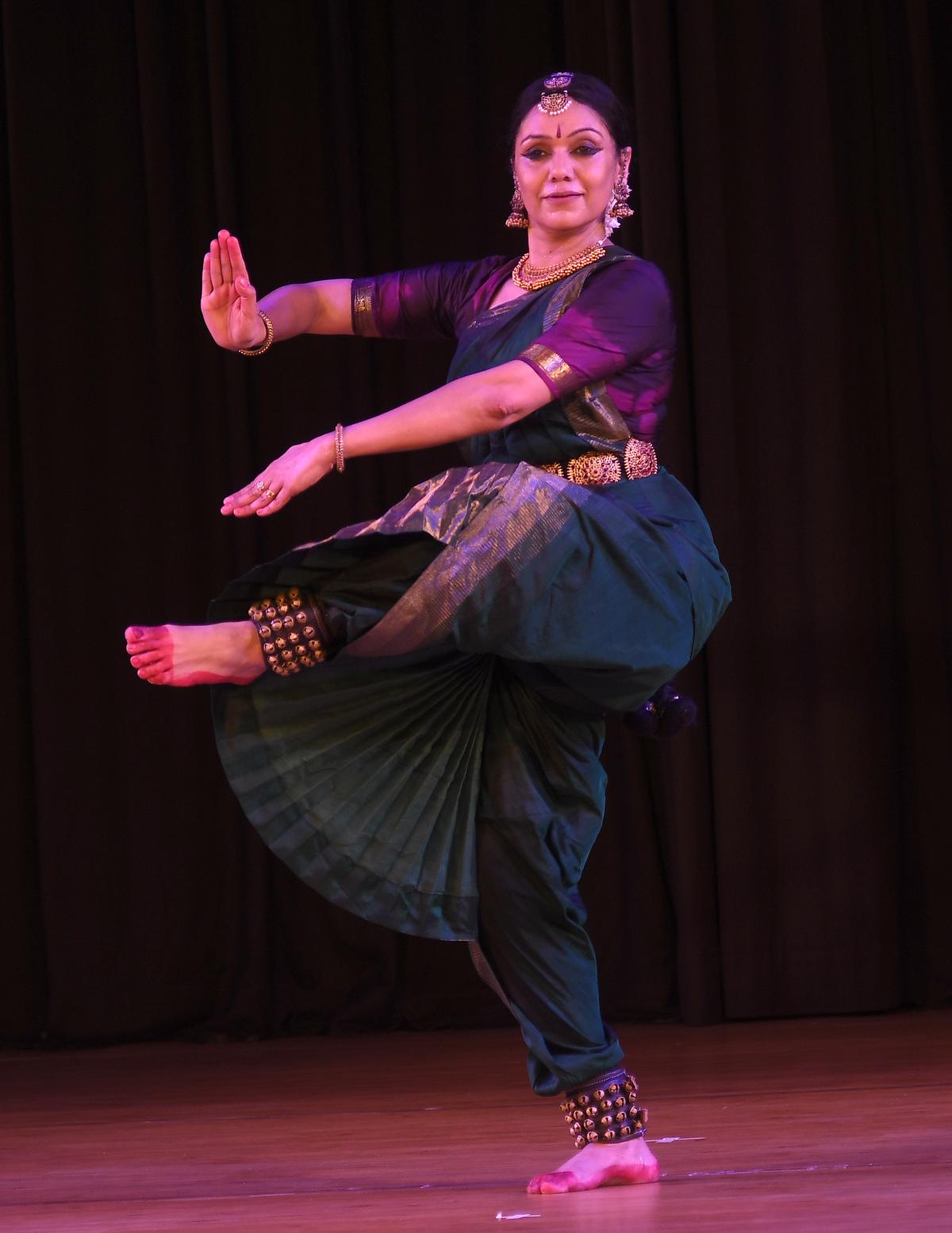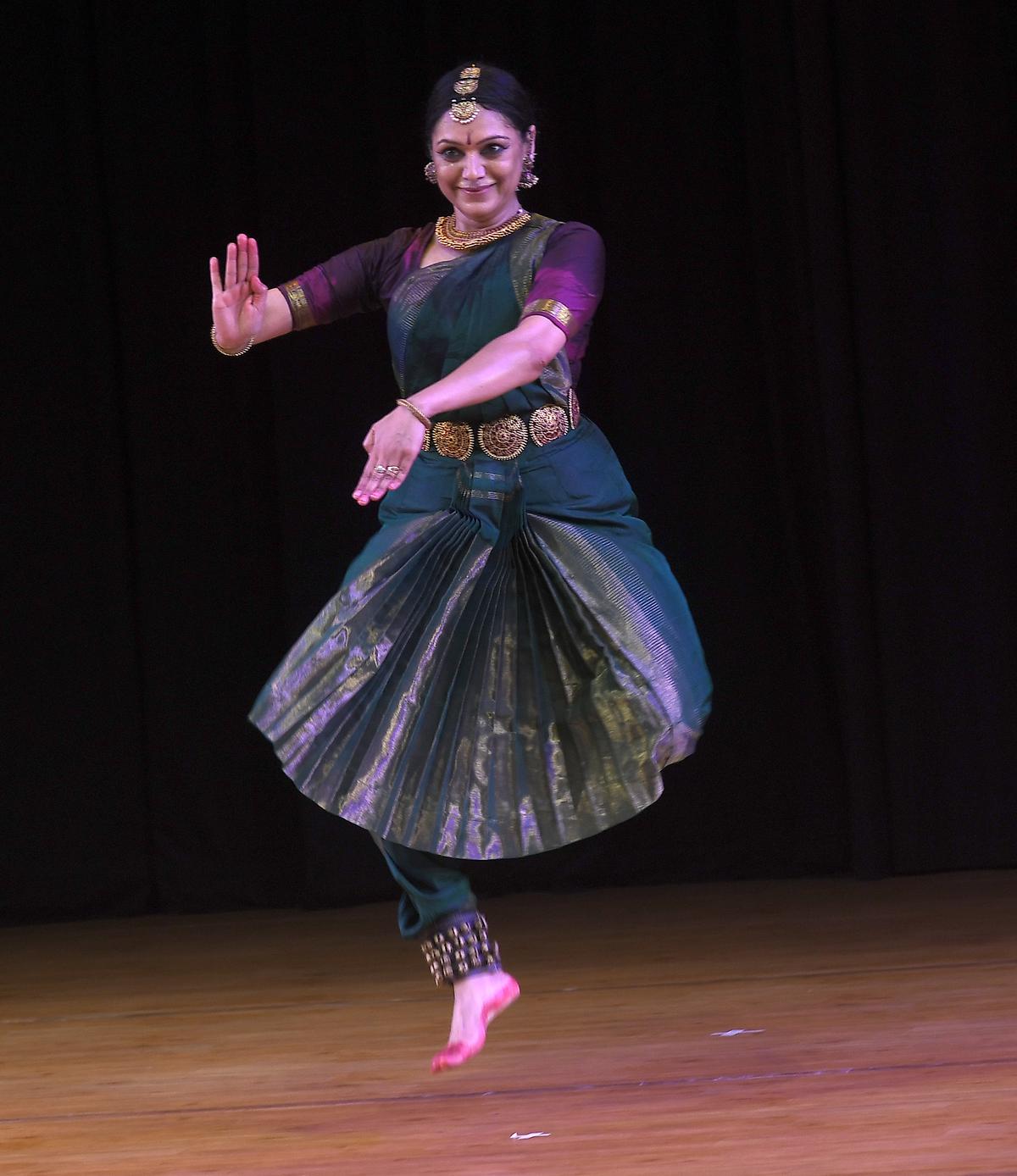
Rama Vaidyanathan’s performance at The Music Academy.
| Photo Credit: VELANKANNI RAJ_B
It was one of those days when the twin streams – music and dance – intertwined beautifully. It happened at Rama Vaidyanathan’s performance at the Music Academy dance festival.
‘Sringara rasamanjari’ was the opening composition of the evening, and Rama’s interpretation symbolised the many hues of love. A compositionA of Muthuswami Dikshitar in raga Rasamanjari, it addresses goddess Kamakshi.

Rama Vaidyanathan performing at The Music Academy’s December festival, on January 7, 2024.
| Photo Credit:
VELANKANNI RAJ_B
Through apt sancharis, Rama came up with a detailed description of Kamakshi – from her form to her attire and accessories.
The popular Bhairavi ata thala varnam composed by Pacchimiriam Adiappayya followed. There was an entire sequence here where the life cycle of a lotus — , from the moment it blooms, glows in splendour and slowly wilts with the petals disintegrating before submerging in the waters — was beautifully visualised to highlight the emotional state of the nayika.

Rama Vaidyanathan performed at The Music Academy’s December Season on January 7, 2024.
| Photo Credit:
VELANKANNI RAJ_B
Depicting Rajagopala, as Krishna the cowherd, the dancer portrayed the cows being herded into their shelter with finesse and a dash of humour, when she questions an unruly cow ‘Are you a peacock to be prancing around, and not following the herd?’
The nritta passages had the dancer, nattuvanar and the mridangist in perfect synchrony to create rhythmic movements that flowed seamlessly with the mood.
In a continuum of sringara rasa, the melody of the flute casts a romantic spell on a woman slowly awakening from a night of passion with her beloved. The song ‘O je mane na mana’, written by Rabindranath Tagore, speaks of a woman entreating her lover to go away as the sun has risen.
The final composition, a swara padam, focussed on Shiva. Is he the one on the bull in the procession, is he the one who burnt Kama, or is he the one who gave half his form to Devi, asks the devotee. Rama conveyed them all through her nuanced expression, particularly of ardhanarishwara by covering one half of her face with her palm.
The musical team contributed immensely to the rasanubhava. Sudha Raghuraman’s singing was not just in synchrony with the dance, but enhanced the experience. Sumod Sreedharan on the mridangam and Raghuraman on the flute let melody hold sway till the last sequence. S. Vasudevan wielded the cymbals impeccably.